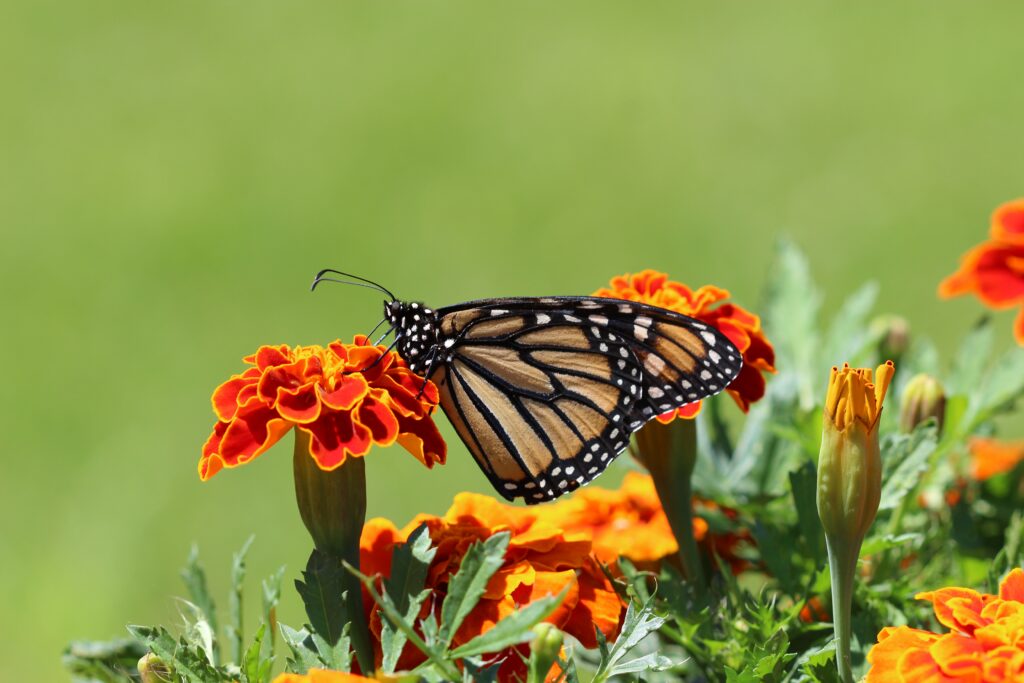
© Picture by Katie Burandt
Everything we do here at MicroHabitat is possible thanks to… insects? Yes! Insects, birds, and even bats can act as pollinators, meaning that they transfer pollen from the male part of flowers to the female part. This is a necessary process without which plants would not be able to produce fruits and seeds. In line with our biodiversity articles, here are some of our favourite native pollinators!
Butterflies
After bees, butterflies are the most well-known pollinators, and for good reason; their colourful wings and graceful flight will charm just about anyone. Sadly, butterflies’ numbers are dwindling due to loss of habitat. The destruction of plants that their larvae, that we know as caterpillars, rely on to grow in turns affect the butterfly population.
Bees
When we think of bees, we often think of colonies of bumblebees, but most species of bees are actually solitary! They pollinate a wide range of plants, from vegetables and fruits, to flowers and forest plants. While native bumblebees do not produce honey, they are crucial to the pollination of native plant species and to the ecosystem as a whole.
Flies
Flies get a bad rep, usually associated with death and decay, but they are actually the second most important pollinators behind bees! There exist a wide variety of flies native to North America. Some of them are sometimes mistaken for bees, since they mimic the black and yellow stripes on their bodies.
Hummingbirds
Hummingbirds love nectar-producing plants. They prefer flowers that are tubular in shape and more adapted to their long, narrow beak. However, their favourite sources of nectar also include plants in the Agastache family such as anise hyssop, which they can find in all of our MicroHabitat gardens!
Parasitic wasps
Wasps, just like bees, are attracted to pollen and nectar produced found in flowers. In addition to being great pollinators, they also feed on detrimental garden pests such as aphids, scale and flies, and therefore help contribute to a healthy balance in the garden.
If you have a garden at home, you can help these pollinators thrive by planting wildflowers and offering them a water source such as a bird bath. Try to minimize the use of pesticides and herbicides, and opt for solutions that are pollinator-safe when absolutely needed. Insects such as wasps, dragonflies and ladybugs are good predators that keep pests in check naturally, so make sure not to harm them if you see them in your garden!

